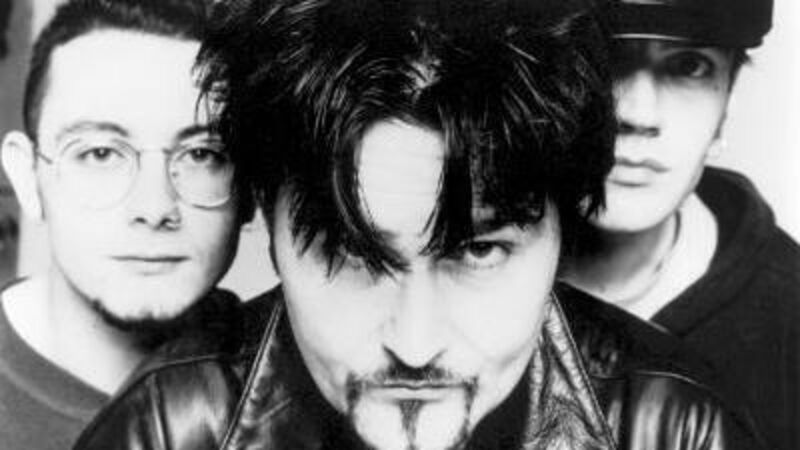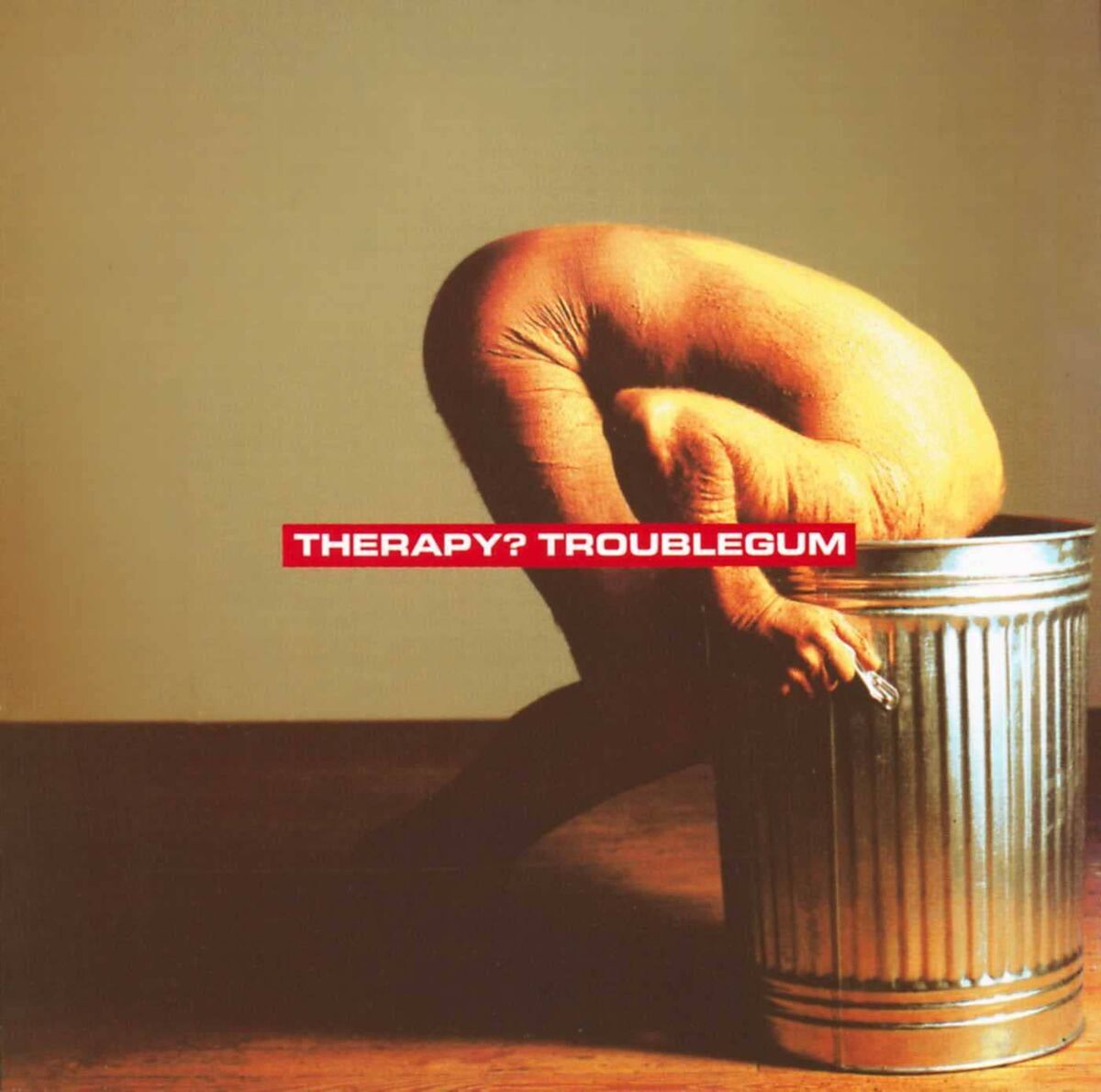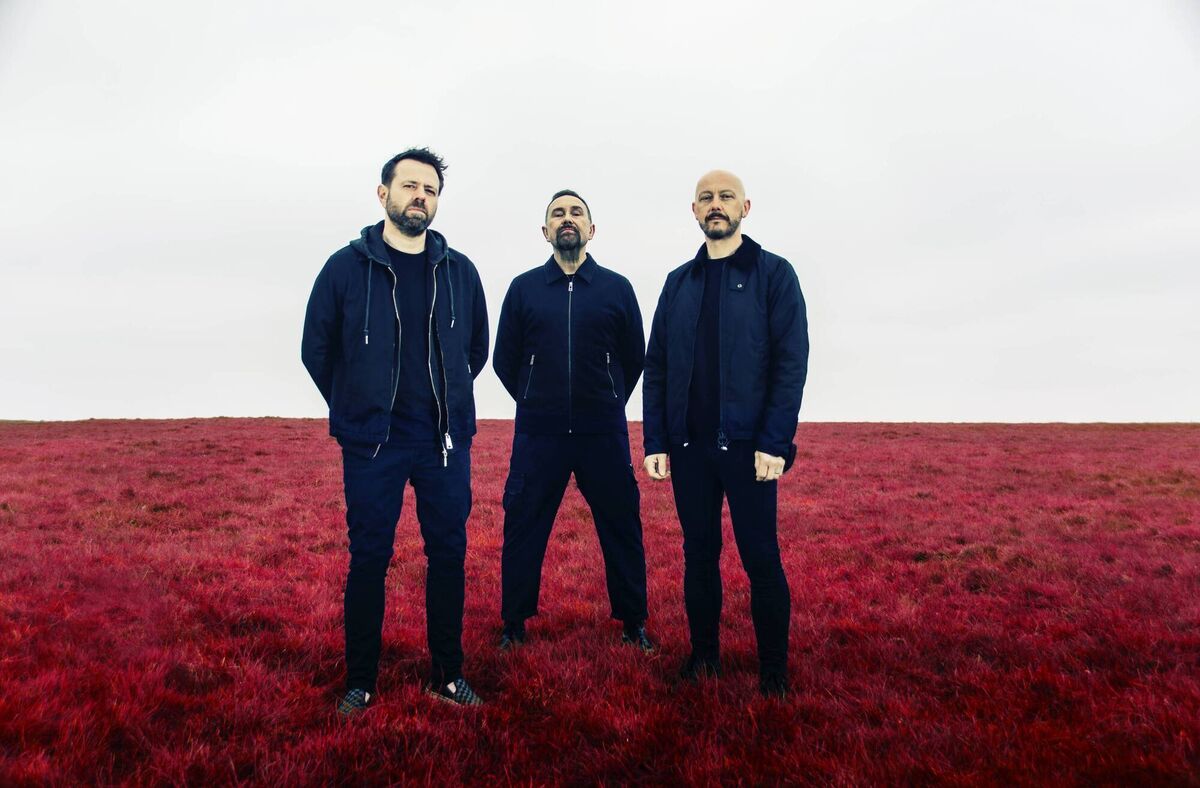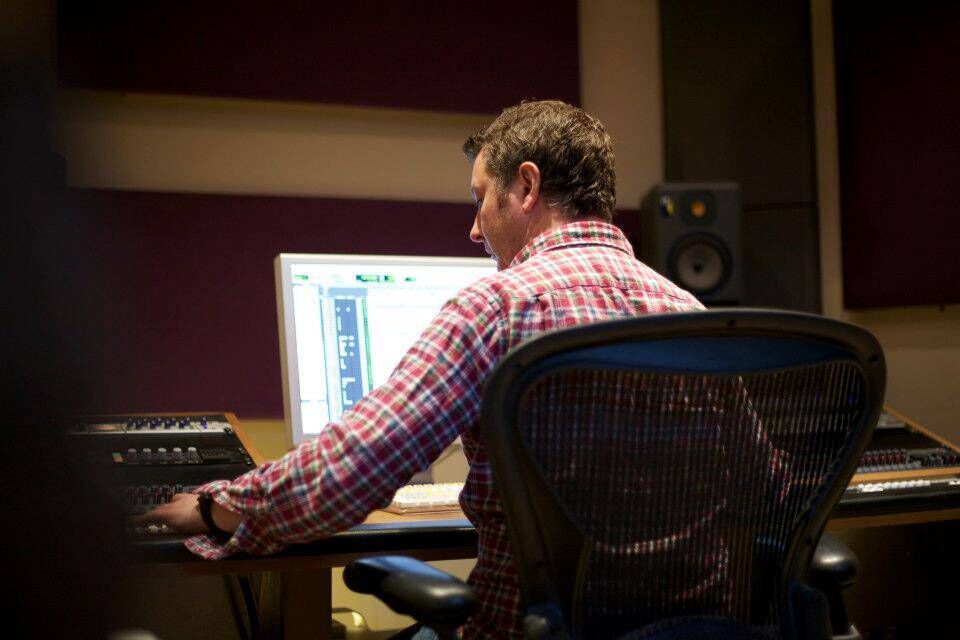Ireland In 50 Albums, No 7: Troublegum, by Therapy?

Therapy? released Troublegum in 1994.
Northern Irish rockers Therapy? made a dent in the musical mainstream in 1992 with debut long-player Nurse - but it was the 1994 follow-up, Troublegum, that truly set the group on the path to success.
Though the album’s accessibility and commercial success marked it as a point of departure for the band, some of its musical ideas date back to early demos, with underlying influences that went right back to vocalist/guitarist Andy Cairns’ childhood in Ballyclare, Co Antrim.
“The main riff from 'Screamager' came from me trying to write a guitar line like 'Big Time' by Rudi, the Ulster punk band,” recalls Cairns. “We put it in a song very early on one of our demo tapes, and I always felt it was wasted. We'd just finished 'Nurse', we were writing some songs, and 'Screamager' was nagging away at me.”
British producer Chris Sheldon, who at that stage had already worked with the likes of Roger Waters and The Pixies, was signed up to work on the next record. He turned up to rehearsals in Putney, London, and asked the band to play the songs they had.
“We had a bit of 'Screamager' on the go, but we didn't have the intro yet, and I remember we thought it was a bit straightforward,” says Cairns. “Sheldon heard it and said, 'this is good, but it's not really Therapy?'. I said, 'what would Therapy? do? - go for other influences', and while there's the Undertones influence, we decided to make it a bit more Helmet, and added the staccato, stabbing elements.”
Writing, recording and post-production was staggered along a number of sessions in 1993, with the Face the Strange EP’ and non-album single ‘Opal Mantra’ boosting the band’s profile in the meantime, and affirming their decision to lean into melody.
“What was curious was, I was expecting more things along the lines of ‘Teethgrinder’, and what Andy had actually written was a bunch of punk classics,” Sheldon says. “We worked very quickly, and we obviously got on really well. The band could play, that was the other thing - they could all play really well. It was just fun, I remember the sessions were therapeutic, a lot of fun.”
"We wanted the aesthetic of the record to be uniform. I would play a riff, I would play a chorus, the band would go 'yea' or 'nay', and we would work on it,” adds Cairns. “I would take home the instrumental track to wherever I was sleeping that night and put some lyrics around it.”
The band went to a studio in Chipping Norton to finish the album with bassist Michael McKeegan and drummer Fyfe Ewing. “They knew the tracks inside-out, it only took three or four days to do the drums and bass, then me and Sheldon were able to take our time with vocals and guitar,” says Cairns.
The rest is history. Troublegum was unleashed in February of 1994 via A&M Records, hitting the top 5 in the UK album charts, seeing the band splashed all over music media, and earning a rare Mercury Prize nomination for an album of its relative heft and heaviness.

Album singles like the Fugazi-inspired ‘Die Laughing’ and ‘Nowhere’, a buzzsaw broadside at rural inertia that featured a police siren-like wail in its chorus, bothered singles charts the world over. “Thin Lizzy meets Husker Du,” says Cairns of the latter song.
The album’s release and initial impact presaged another year of intense touring, including appearances at UK metal mecca Donington, and Irish alternative festival Sunstroke. While it all represented a moment for the band’s music, it placed huge pressure on the people behind it.
“Obviously, you never know how an album is going to be received, but I was pretty certain after the success of Screamager, that people were going to dig it. I wasn't surprised, but I was really happy that it did as well as it did,” says Sheldon.
“We had no idea of the impact it would make. I didn't expect it to be as successful as it was, and if I'm honest, the record company weren't sure it would be either,” says Cairns. “They hadn't spent a lot of money, and this was actually done quite quickly - for all the accusations of the record being overproduced, there's 24 tracks on a soundboard, and we only used 16 of them.
“We did some amazing Irish shows and we had Kerbdog with us. One of the first tours we did was Germany, and we noticed that the venues were twice the size, and they were full. On top of that, we were going to countries we'd never visited before, we were playing small clubs that were sold out.” In 1994, they went to America three times, had played numerous gigs elsewhere, and were feeling the pinch.
“We should have taken three or four months off before we did anything else, but we got straight back into it,” says Cairns.

Troublegum celebrates its 29th anniversary this month, nearing a big milestone for an album that provided the band with career commercial success, and opened them up to a fanbase that has taken them to their hearts, helping maintain a full-time gigging and recording presence in the intervening three decades.
“We're very lucky in the fact that we have that one album that people know,” says Cairns. “So many musicians never get around to making that one album that everyone knows them for. If you mention Therapy? to a rock fan, they'll say, nine times out of ten, 'oh, yeah, Troublegum' - we're very, very, blessed to have that.”
The Therapy? main man couldn’t resist looking at some of the recent comments on social media about the record. “What I'm proud of, more than anything else, is the amount of people saying that it either inspired them to form a band, play an instrument, or saying things like 'this got me through a really hard time'.
“And if, in some way, the three of us had been responsible for making records that had the same impact on them, that records by Joy Division, and the Undertones had on me, I'm over the moon with that.”
- Therapy?’s ‘Troublegum’ is available on streaming services now, as well as in stores in a Deluxe 3CD Edition featuring B-sides and remixes, and on vinyl via a MusicOnVinyl repress.
Having departed A&M Records (now part of Universal) in 1998, Therapy? continue to write, record and tour full-time, with original members Andy Cairns and Michael McKeegan joined by former Cable/The Beyond drummer Neil Cooper in 2002. In 2020, the band marked their 30th anniversary, and 16th album Hard Cold Fire is due for release in the coming months via Marshall Records.

Chris Sheldon has since had a stellar career in music production, engineering and mastering, working with Radiohead, Mike Scott, Biffy Clyro, Bloc Party and Foo Fighters - acting as mastering engineer on the latter’s 1997 classic ‘The Colour and the Shape’. He continues to act as a regular studio producer with Therapy?, including on the band’s upcoming album.


